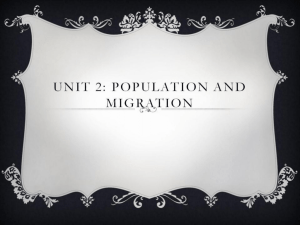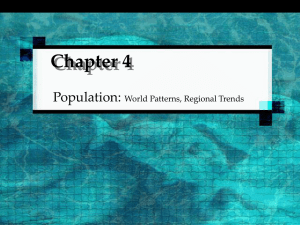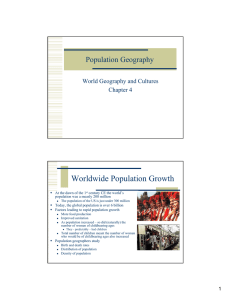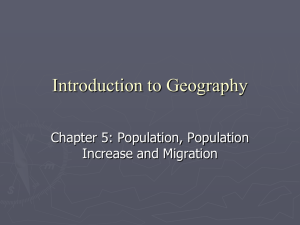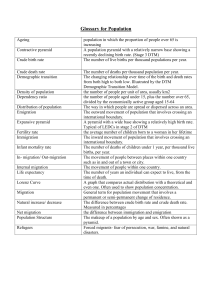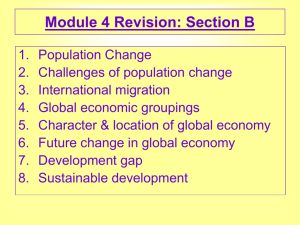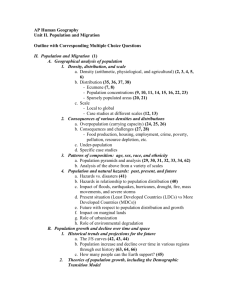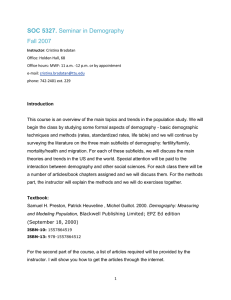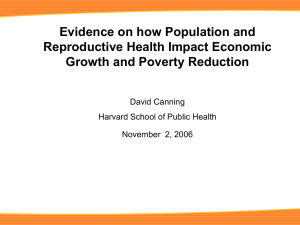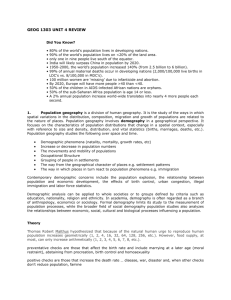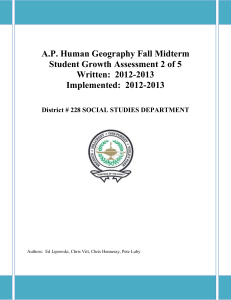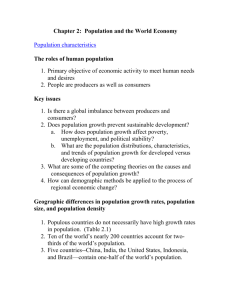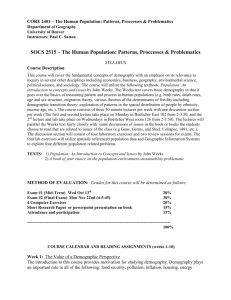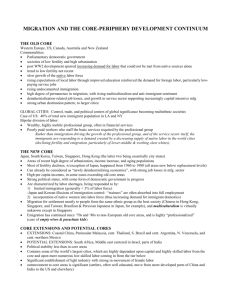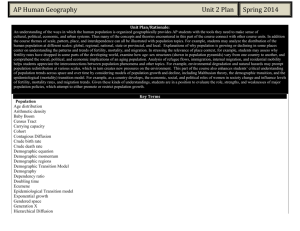General exam
advertisement
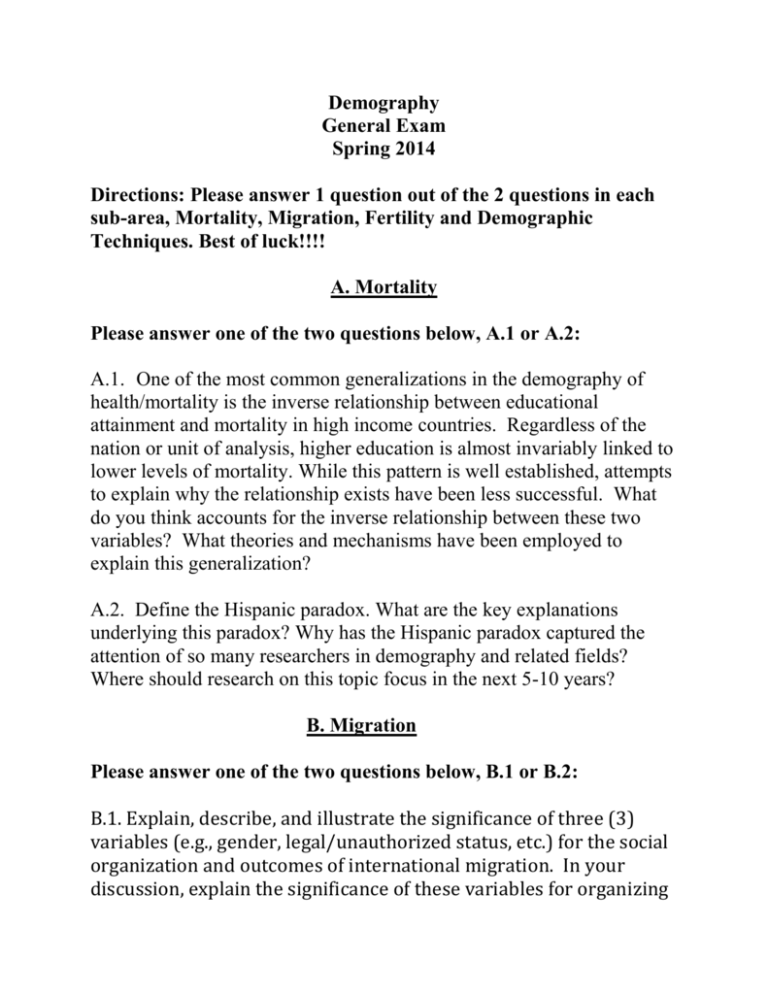
Demography General Exam Spring 2014 Directions: Please answer 1 question out of the 2 questions in each sub-area, Mortality, Migration, Fertility and Demographic Techniques. Best of luck!!!! A. Mortality Please answer one of the two questions below, A.1 or A.2: A.1. One of the most common generalizations in the demography of health/mortality is the inverse relationship between educational attainment and mortality in high income countries. Regardless of the nation or unit of analysis, higher education is almost invariably linked to lower levels of mortality. While this pattern is well established, attempts to explain why the relationship exists have been less successful. What do you think accounts for the inverse relationship between these two variables? What theories and mechanisms have been employed to explain this generalization? A.2. Define the Hispanic paradox. What are the key explanations underlying this paradox? Why has the Hispanic paradox captured the attention of so many researchers in demography and related fields? Where should research on this topic focus in the next 5-10 years? B. Migration Please answer one of the two questions below, B.1 or B.2: B.1. Explain, describe, and illustrate the significance of three (3) variables (e.g., gender, legal/unauthorized status, etc.) for the social organization and outcomes of international migration. In your discussion, explain the significance of these variables for organizing migration at places of origin and for social incorporation effects of migrants at places of destination. B.2. Discuss, and describe the significance of social capital in theories of international migration. In your essay explain how the significance of social capital for international migration can vary by gender, occupational characteristic, and mode of migration (unauthorized v. authorized). C. Fertility Please answer one of the two questions below, C.1 or C.2: C.1. How useful a concept is the “Second Demographic Transition” for thinking about differences in fertility between states in the US? What does this framework emphasize? What does it leave out? To what extent is the concept limited by its European origins? C.2. Ever since the 1960s there has been a continuing debate regarding the importance of increasing access to modern contraception as a means of promoting or facilitating a reduction in unintended pregnancy. What are some of the arguments on both sides of this debate? You may speak either about the situation in the United States, or in some other part(s) of the world. What evidence do you find most convincing? D. Demographic Techniques Please answer one of the two questions below, D.1 or D.2: D.1. Attached you will find a life table for the total population of Bulg aria in the 1947-1949 period. Eight numbers from this life table have been removed. Please calculate the missing numbers and explain how you did each calculation. i) In this life table, what is the probability that someone who survives to age 20 will survive to age 90? j) In the stationary population corresponding to this life table, what fracti on of the populationage 65 and over is alive ten years later? k) If you were asked to use this life table to project the population of labor force age (15-65) ten years into the future (to 1957), and you had census estimates of the total population of both sexes in each 5 year age group in 1947, describe as precisely as possible how you would do that projection. D.2. Suppose that, beginning at the end of 2010, the population of Colombia was suddenly closed to migration to and from Venezuela, Ecuador, and all other countries, was subject to a constant level of mortality (with an expectation of life of 75 years for both sexes) from that point forward, and had varying fertility rates at just the level needed to maintain 774,000 births (the same number of births as in 2014) for the rest of time. In 2014 at about mid-year, the size of the population was 46,245,000, the Crude Birth Rate was 17 per thousand, the Crude Death Rate was 5 per thousand, the Crude Growth Rate was 11 per thousand, and the TFR was 2.1. a) What would happen to the age distribution of the population, and over what time frame? Give as complete a description as you can. b) What would be the approximate size of the population in the year 2100? c) What, approximately, would be the Crude Birth Rate and the Crude Death Rate at the turn of the next century in 2100?
